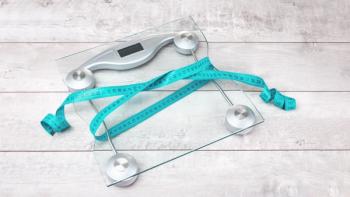
- Nutritional Outlook Vol. 27 No. 6
- Volume 27
- Issue 6
Taking Initiative: Can the WHI’s model help the nutraceutical industry answer questions the study didn’t even ask?
The Women's Health Initiative is the high water mark for women's health research. What can the nutraceutical industry learn from WHI to further scientific research about the impacts of diet, lifestyle, and supplementation on women's health?
Article sponsored by: Women in Nutraceuticals (WIN)
When the National Heart, Lung, and Blood Institute launched the
At its close, this herculean lift of a research effort—lasting more than two decades and involving 160,000-plus women aged 50 to 79 enrolled at 40 clinical centers nationwide—so transformed the public’s view of hormone therapy and its clinical application that the study’s conclusions still reverberate today.
But transformational as it was, the WHI raised at least as many questions as it answered, and left many more unasked besides.
So what would happen if the nutraceutical industry were to pick up where the WHI left off and apply its model—not to mention its lavish resources—to addressing some of those questions? And what if the answers brought us back to home base: leveraging diet, lifestyle and supplementation as tools for uplifting women’s health?
Major Impact
Even before statisticians ran their first multivariate analyses of any WHI data, the project was already capturing the public’s attention.
Yalda Shokooh, PharmD, PhD, director of science and nutrition, NOW Foods, recalls how the initiative struck her when it first made headlines. “My aunt had developed breast cancer after having hormone therapy,” she recollects, “so it was interesting reading about the study at the time. And being a breast-cancer survivor, myself, I can feel her pain now more than ever.”
But the study’s relevance extended well beyond the personal, and as Shokooh points out, “The WHI had 161,000 participants, collected and documented 5.3 million specimen vials and led to the publication of 2,380 papers using its data! It definitely had benefits for women’s health.”
Jacqueline Jacques, ND, FTOS, naturopathic doctor, wellness industry expert and consultant, agrees, calling the WHI’s “sheer size and scope” a “clear strength” that yielded invaluable insights into postmenopausal health.
“We learned so much about the impact of hormone therapy, diet and calcium on heart disease, cancer and osteoporosis,” she says, “and much of that learning has had a genuine impact on standards of care.”
Exposing a Deficit
But perhaps as important as all those lessons was the exposure the WHI gave to what Jacques calls “the deficit of research on women”—an exposure she considers “crucial because women's bodies and responses to interventions can differ significantly from men’s.”
And yet, Jacques notes, “It’s worth remembering that starting in the 1970s, FDA discouraged including women in clinical trials”—a policy it didn’t reverse until the 1990s. “So for decades, data on men were extrapolated to women.”
That’s a half-measure, at best, and it ushered in a “Dark Age” for female-focused science that proved all the more poignant in light of the strides that health researchers made more broadly during the same era.
But Jacques adopts a degree of stoicism. “We have to accept that we lost decades,” she concedes, “and we have to make up for that lost time by assuring that we plan studies appropriately going forward to include the half of the population we’d once neglected.
Holistic Holes
But the gender-research deficit isn’t the only gap that science still needs to close—nor is it the only gap that the WHI, somewhat inadvertently, revealed.
For, as Jacques argues, “The WHI left so many questions unanswered, particularly regarding the impact of more holistic approaches to women’s health.”
By “holistic,” she means all the diet, lifestyle and supplemental interventions that word now connotes. And giving credit where it’s due, she applauds the WHI for at least considering them on the margins.
For example, “We did garner some valuable data validating that a diet rich in fruits, vegetables and grains can significantly reduce breast-cancer risk,” she points out. Further, the initiative yielded what she calls “valuable findings” on calcium and vitamin D’s relationship to bone loss, ultimately supporting supplementation for women not meeting the nutrients’ intake guidelines through diet alone, she adds.
Commonsense Solutions
But given that investigating these “holistic”—or, as some might say, commonsense—approaches was not the WHI’s main event, its findings around pharmaceutical interventions, consequently, took center stage. And as far as David J. Foreman, RPh, president, Herbal Pharmacist Media LLC, is concerned, that represents a missed opportunity.
“It was brilliant to focus on this sector of women’s health,” he acknowledges. “But we need more long-term studies specific to women, nutrition, supplementation and other lifestyle decisions. While medication is important, understanding how diet, supplements and lifestyle best support women’s health across all time points is imperative in giving proper guidance and education.”
And that’s music to Jacques’s ears. “Would I love to see a study of this size and scope that focuses even more on diet and nutraceuticals?” she asks. “Absolutely! So let’s find a way to make that happen.”
It’s Complicated
But therein lies the rub: If stage-managing all the resources required to execute a pharma-focused WHI sounds hard, try putting that same effort into conducting a long-term study of how women eat, supplement and take care of themselves in their daily lives.
As Petra Erlandson, director of sales and marketing, Alkemist Labs, argues, “We’d all love to see this kind of comprehensive research exploring herbs and supplements, but nutrition research is complicated!”
She points to
Evolving Infrastructure
Adds Emily Ho, endowed chair and director of the Linus Pauling Institute and University Distinguished Professor at the Oregon State University College of Public Health and Human Sciences, our infrastructure for studying nutrition and nutraceuticals is still evolving.
“We don’t have great tools for assessing diet,” she notes. “There’s an inconsistency and lack of standardization of terms and doses. And dietary-supplement use, as well as diet, aren’t often captured in electronic health records. Couple that with the misinformation out there about dietary supplements and it’s no wonder that research and consumers are confused.”
Verified or Viral?
And how confused they are. Alas, Ho laments, evidence-based research isn’t always as “popular” as the social-media health hacks that go viral before a clinical trial can even make it through peer review.
Erlandson has a hunch as to why—and it isn’t all the fault of clickbait. Granting that “we find ourselves in an era when social-media trends can drive health choices instead of science,” she also recognizes that “reading detailed studies like the Women’s Health Initiative is beyond the scope and time investment available to the general public.”
Even some of the WHI’s conclusions were “lost in translation” as the media scrambled to convert them into recommendations, Ho recalls. “In many cases,” she explains, “the WHI was able to evaluate risk. But with health issues like these, it’s always complicated to evaluate risks versus benefits across multiple parameters.” And that’s as true of contemporary nutrition research as it was of the WHI.
Clearing the Air
All of which is a clarion call for clear communication of science, no matter the nature of the research.
As Shokooh insists, “It’s essential to deliver the results of clinical studies in clear, lay language, and to work with marketing teams and influencers to spread accurate scientific information to the public.”
Thus she applauds the efforts of the
“Industry associations should also collaborate by sharing resources, expertise and best practices to maximize this effect,” Shokooh adds. “For example, I love what organizations like AHPA do to promote this.”
Arming Women
And the stakes of delivering a clear message are high, particularly for women and those in their care. For, as Erlandson asserts, “Consumers need and deserve to make data-driven choices when managing their health. But it’s even more critical to empower women to make data-driven choices because our decisions impact not just our own health, but the health of our whole families.”
She cites US Department of Labor
Her conclusion: “Arming women with scientifically driven knowledge can improve not only our own health outcomes, but the broader public’s as well.”
Thinking Big
So wouldn’t it be a coup if we could do just that with the knowledge gleaned from a far-reaching, well-financed and exactingly designed research initiative that does what the WHI did, but with respect to diet, nutrition and lifestyle’s health impact on women of all ages and profiles?
Industry experts believe that we can, and they have some proposals for getting the project started.
Shokooh kicks off the brainstorming with the suggestion that “we need larger, multicenter clinical trials for supplements.” And because such trials can be prohibitively expensive and difficult to conduct, “we could also leverage artificial intelligence to conduct virtual ones,” she submits.
Jacques thinks “it might be easier to envision the model of a decentralized clinical trial, or DCT.” DCTs, she explains, use such technologies as telemedicine consultations, mobile health apps and wearables to collect data and monitor participants remotely. “Because they allow for more real-world and real-time observation,” she posits, “DCTs might be a better—and more economical—vehicle for learning how diet, supplements and lifestyle interventions impact women in their everyday lives.”
Ho highlights the need for what she describes as “better ways of assessing individuals’ diets and environments”—that is, “all those other factors that come into play in health. We need to understand these interactions and relationships, and we need to standardize how we collect data on them so we know we’re all talking about the same thing. We also need better tools to integrate all these different data streams.”
A Wider Tent
“Lastly,” Ho recommends, “we need to reach and capture data from everybody—especially the underserved and marginalized communities that are harder to get this data from.” More than 85% of the WHI’s data came from Caucasian subjects, she notes, and “more efforts to diversify the participants and available data is needed.”
Shokooh agrees, adding that socioeconomic diversity among participants is also paramount. And because the WHI’s participants were older and often already burdened with “health complications that might’ve skewed results,” she says, she’d love to see large-scale studies on healthy women in their twenties through thirties.
Foreman even emphasizes the imperative of including yet younger women as subjects. “We need to see more attention to pre-menses health,” he maintains. “Like postmenopausal health, this is another area where science can uncover a wide variance between men and women. Focusing on women specifically can offer better suggestions for a developing girl and woman.”
About Time
Doing so would go a long way toward righting the gender wrongs of science past and getting us closer to ground truths about how practices around diet, supplementation and healthy living can help all women.
Fortunately, “This is one of the challenges Women In Nutraceuticals (WIN) is taking on,” Erlandson states. “Part of WIN’s mission is championing more participation by women in science and more research initiatives in female populations. One product of the WIN science committee, of which I’m part, is a series of web seminars to further research initiatives in female populations. Our first session was specifically about considerations for recruitment of female participants in clinical studies.”
And it’s about time. As if we needed reminding, “Women are half the population,” Jacques reiterates. “They deserve high-quality research that gives them solid evidence for making informed decisions about diet and supplement use. Done right, that research could pave the way for impactful nutrition plans that account not only for gender, but for genetics, age, biochemistry and more. I’d like to see our industry move beyond seeing research as a marketing tool and to really embracing the power of well-designed studies that help us all do better—not just for women, but for everyone.”
Articles in this issue
over 1 year ago
Can frozen foods be convenient and healthy?over 1 year ago
On Your Mark, Get Set… Gummiesover 1 year ago
Hot & Soft Drinks Trends in 2024Newsletter
From ingredient science to consumer trends, get the intel you need to stay competitive in the nutrition space—subscribe now to Nutritional Outlook.





